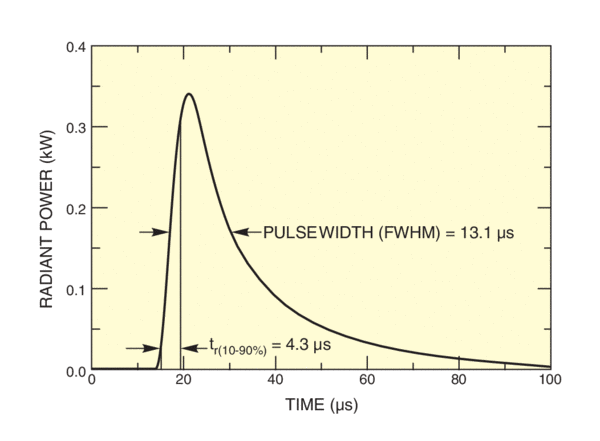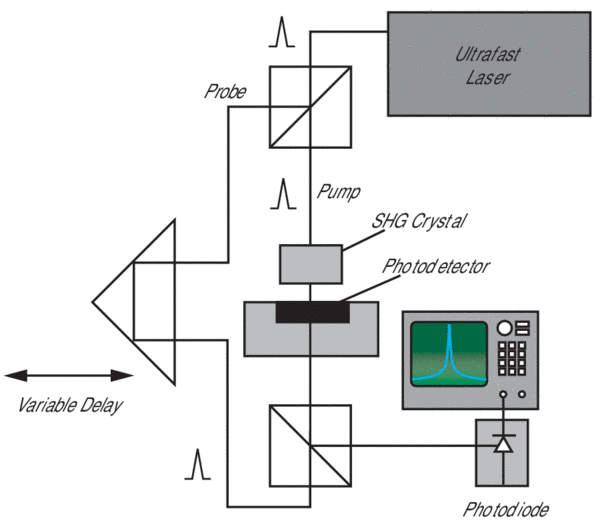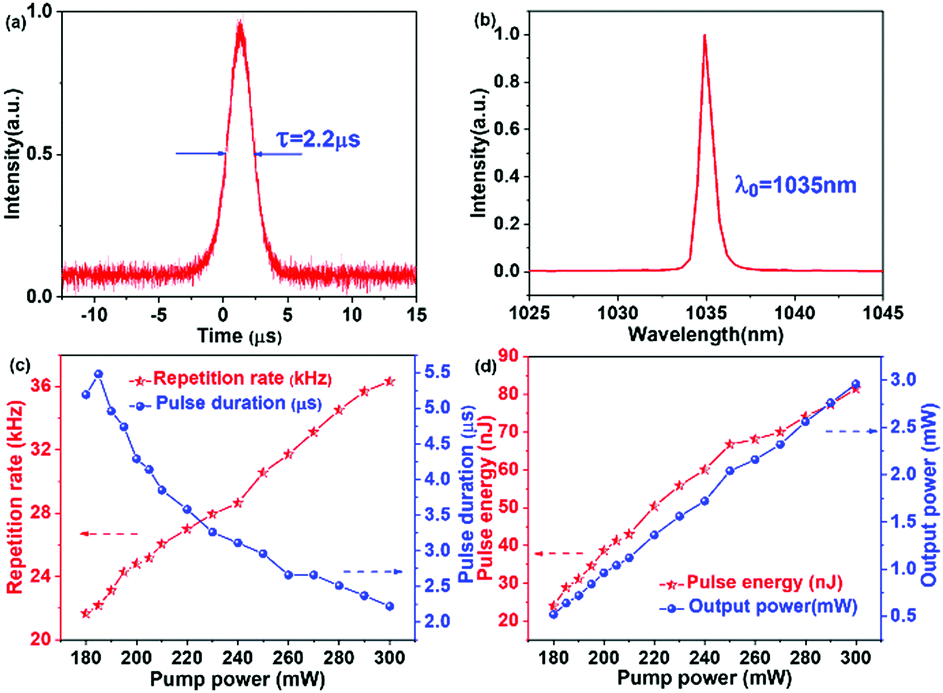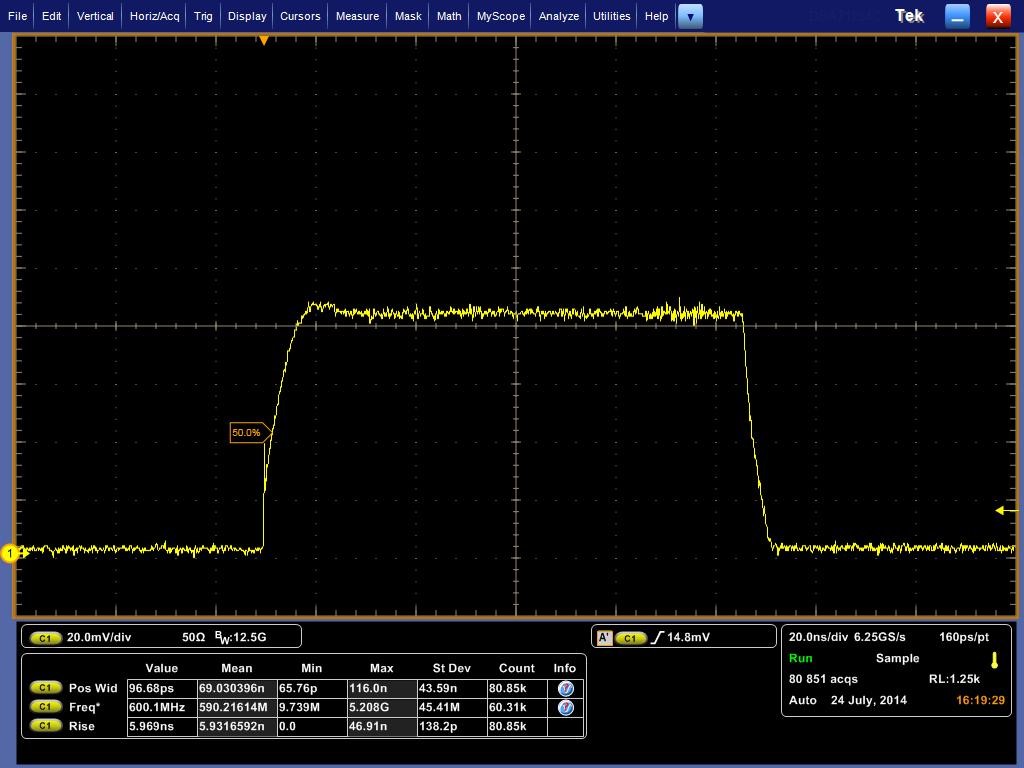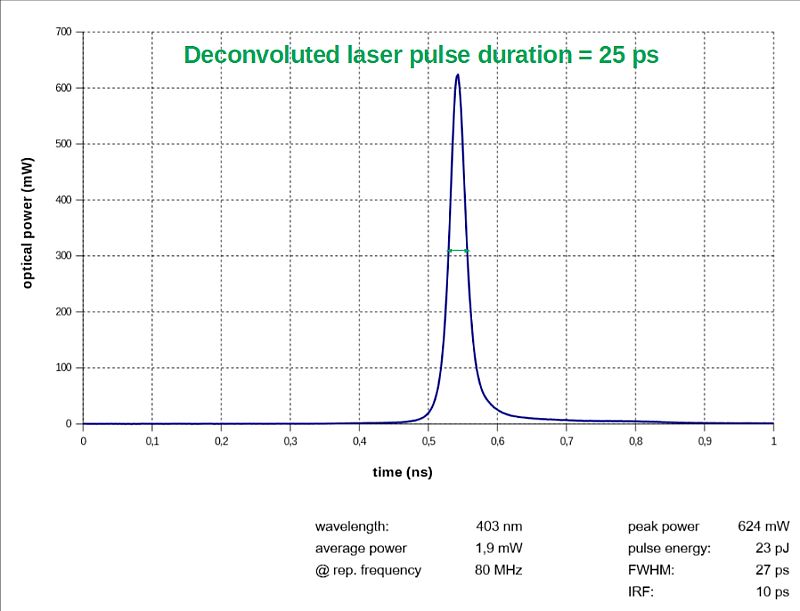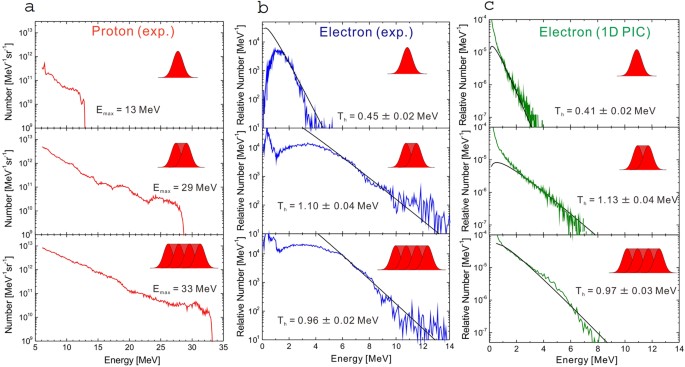The resolution of the spectral measurement often limits the broadest pulse width that a pulse analyzer can measure most other competitive products can only measure pulses less than 1ps.
Laser pulse width measurement.
Theoretical analysis and experimental measurement of pulse width jitter of diode laser pulses are presented.
The expression of pulse power spectra with all amplitude jitter timing jitter and.
Such a pulse is to one second as 5 cents is to the us national debt.
This level of pulse energy can cater to some applications but a large number of applications are served with pulse energies in the 100 µj range.
Despite the high velocity of light ultrashort pulses can also be very short in the spatial domain.
The laser pulse duration cannot be easily measured by optoelectronic methods.
But a pulsed laser is much more complex.
The iqfrog has a built in high resolution spectrometer to enable measurement of transform limited pulses of up to 10 ps width or broader if the pulse has a.
Other techniques based on two photon absorption may also be used in autocorrelation measurements.
It s routine to generate pulses shorter than 10 13 seconds in duration and researchers have generated pulses only a few fs 10 15 s long.
Consequently this idea can make a current or future user maybe even you come to the conclusion that an ultrashort pulse laser must be paired with a special and costly detector.
3 ultrashort laser pulses are the shortest technological events ever created by humans.
The fps 1 has a rise time of 1 5 ns so even short pulsed lasers can be measured.
It can be shown that the intensity autocorrelation width of a pulse is related to the intensity width.
The laser light has a certain power and that s exactly what you re measuring with your laser power meter.
The spatial width of a pulse in the propagation direction is given by the group velocity times the temporal pulse width.
Now if you re looking to measure energy per pulse you re going to need to look at all those.
Besides power you also need to worry about pulse energy frequency and pulse width duration.
The big negative is that nonlinearities scattering and other effects in the fiber amplifier limit the maximum per pulse energy that can be attained to about 10 µj at a 10 ps pulse width.
A 1 ns pulse still has a length of 30 cm in air the shortest pulses which can be generated directly with a laser with a duration of roughly 5 fs have.


